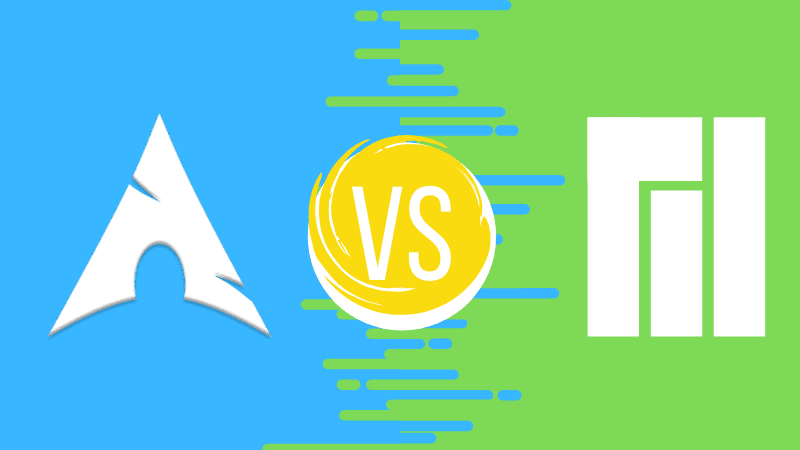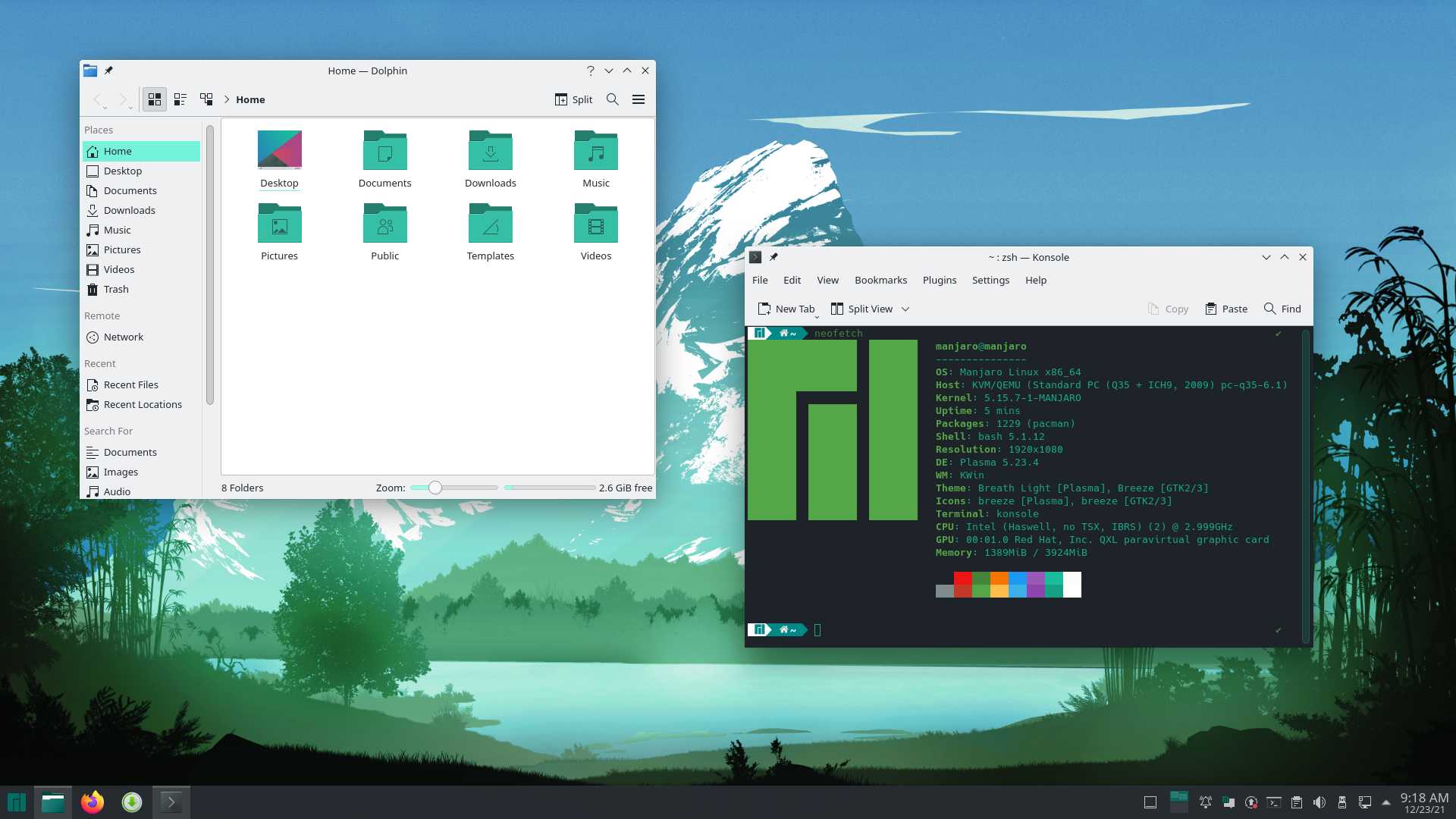Solus vs. Manjaro: Which Independent Distro Wins?

Solus and Manjaro are two of the most popular independent Linux distributions. Both are known for their user-friendliness, but they also have some key differences.

Solus is a rolling release distro, which means that it is constantly updated with the latest software. This can be a big advantage for users who want to stay on the cutting edge of technology. However, it can also be a disadvantage for users who prefer a more stable system.

Manjaro is a semi-rolling release distro, which means that it is updated less frequently than Solus. This makes it a more stable system, but it also means that users may not get access to the latest software as quickly.
Solus uses the Budgie desktop environment, which is known for its simplicity and elegance. Manjaro uses the KDE Plasma desktop environment, which is known for its customization and flexibility.
In terms of performance, Solus is typically faster than Manjaro. This is because Solus uses a lighter desktop environment and is less resource-intensive.
Manjaro has a larger community than Solus. This means that there is more support available for Manjaro users.
Ultimately, the best distro for you will depend on your individual needs and preferences. If you want a rolling release distro that is fast and lightweight, then Solus is a good option. If you want a semi-rolling release distro that is stable and customizable, then Manjaro is a good option.
Here is a table that summarizes the key differences between Solus and Manjaro:
| Feature | Solus | Manjaro |
|---|---|---|
| Release model | Rolling release | Semi-rolling release |
| Desktop environment | Budgie | KDE Plasma |
| Performance | Faster | Slower |
| Community size | Smaller | Larger |
Executive Summary
Independent Linux distros such as Solus and Manjaro have offered much-needed competition in a market that is often dominated by Ubuntu. Each distro takes on a different approach to achieving its user-centric goals by putting unique spins on such topics as user experience, stability, and community. While there is no one-size-fits-all answer to the question of which is a better choice on the surface, Solus is an excellent option for those that prefer a highly polished, easy-to-use experience that they can count on being stable. Manjaro, meanwhile, is a top choice for those that prefer greater customizability and are willing to put in a little extra work to get things configured to their liking.
Introduction
Choosing the right distro can be a daunting task, but it doesn’t have to be. With a bit of research, you can narrow down your choices based on your needs and preferences. If you’re looking for a user-friendly distro with a strong focus on stability and user experience, then Solus is a top choice. If you’re a more experienced user who desires a distro with greater customizability, then Manjaro is an excellent choice.
Comparison
User Experience
Solus: Solus is designed to be as easy to use as possible. The default Budgie desktop emphasizes simplicity, with a clean design that is easy on the eyes and a focus on productivity. The addition of a built-in Software Center makes it easy to find and install new applications.
Manjaro: Manjaro is based on Arch Linux, which means it can be more complex to set up and use than Solus. However, Manjaro comes with a highly customizable graphical user interface (GUI), which can be tailored to your liking. Manjaro also has a large community of users who are willing to help out new users.
Stability
Solus: Solus is known for its stability. The distro’s rolling release model means that you’re always running the latest version of the software, which includes the latest security patches. Solus also has a strict testing process in place to ensure that new updates don’t break anything.
Manjaro: Manjaro is also a rolling release distro, which means that you’re always running the latest version of the software. However, Manjaro’s testing process is not as strict as Solus’s, which can lead to occasional stability issues.
Community
Solus: Solus has a strong and supportive community. The community is very active on the Solus forums, and there are also a number of unofficial Solus user groups on social media.
Manjaro: Manjaro also has a large and supportive community. The community is very active on the Manjaro forums, and there are also a number of unofficial Manjaro user groups on social media.
Package Management
Solus: Solus uses its own package manager, called eopkg. eopkg is a simple and easy-to-use package manager that makes it easy to find and install new applications.
Manjaro: Manjaro uses pacman, the package manager for Arch Linux. pacman is a powerful and versatile package manager that gives you access to a wide range of software. However, pacman can be more complex to use than eopkg.
Rolling Release vs. Stable Release
Solus: Solus uses a rolling release model, which means that you’re always running the latest version of the software. This can be a good thing, as it means you’re always getting the latest security patches and features. However, it can also be a bad thing, as it means you may run into more bugs.
Manjaro: Manjaro uses a hybrid release model, which means that it has both stable and unstable branches. The stable branch is more suited for users who want a reliable system, while the unstable branch is more suited for users who want to experience the latest features.
Conclusion
Ultimately, the choice between Solus and Manjaro depends on your needs and preferences. If you’re looking for a user-friendly distro with a strong focus on stability and user experience, then Solus is a top choice. If you’re a more experienced user who desires a distro with greater customizability, then Manjaro is an excellent choice.
Keyword Phrase Tags
- Solus
- Manjaro
- Linux Distro
- Rolling Release
- Stable Release

Solus is definitely the best choice for me. It’s so easy to use and I love the GNOME desktop environment.
I’m not really a fan of Solus. I find it too limiting. I prefer Manjaro because it gives me more freedom to customize my desktop experience.
I think both Solus and Manjaro are great distros. It really depends on your individual needs and preferences. If you’re looking for a user-friendly distro, then Solus is a good option. If you’re looking for a more versatile distro, then Manjaro is a better choice.
Solus is a great distro, Manjaro because it has a larger software repository.
Solus is the best distro ever! It’s so easy to use and I love the GNOME desktop environment. I don’t know why anyone would use anything else.
Solus is garbage. It’s too simplistic and boring. I prefer Manjaro because it’s more challenging and rewarding to use.
I’m not really a fan of Linux, but I have to admit that Solus is pretty good. It’s easy to use and it has a nice selection of software. I might even switch to Solus full-time.
Solus is the best distro for people who are new to Linux. It’s easy to use and it has a great community of support. I highly recommend Solus to anyone who is looking for a user-friendly Linux distro.